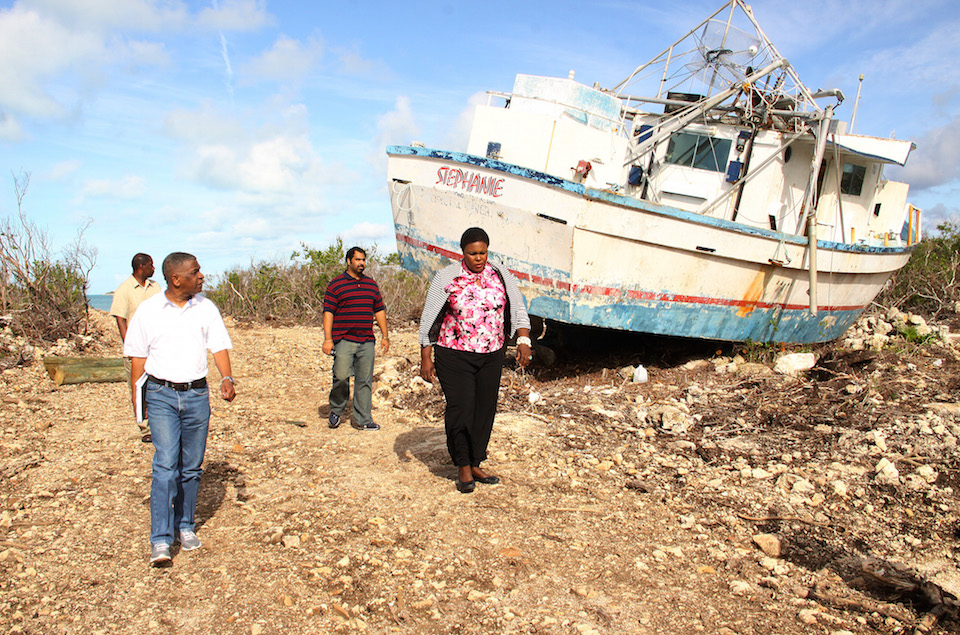Two months after Hurricane Joaquin devastated Long Island, the southeast Bahamian island is beginning a return to normal operations.
A team including Jack Thompson, administrator of the government’s National Recovery and Reconstruction Unit; Captain Stephen Russell; members of the National Disaster Reconstruction Committee; and a group from Bahamas Information Services recently traveled through the island’s settlements and witnessed the comeback that is occurring.
They encountered work teams busy on rooftops, children riding bicycles, congregations worshipping in church, and seniors relaxing outdoors.
Island Administrator Theresa Boodle-Bethel said the residents have “awakened to their realities” and are “coming out of it.”
“They’ve assessed the damage and I’m satisfied that they’ve come to grips with their losses, especially those near the coastline. Some of them are in shells, but they are in good spirits.”
“A number of them who could it afford it took advantage of the exigency order,” said the administrator. “A number of them could not afford it because of the complete washout of their coastal homes. Surprisingly they seem to be holding up given the magnitude of their losses. Some residents’ entire homes were underwater. In Grays so many of the families had to rescue each other and swim to safety so the magnitude of their losses was tremendous.”
She also reported that the island is “a lot cleaner” now that restoration efforts have begun.
The Government Administration Building in Clarence Town sustained minor roof damage, which temporarily disrupted government service, though a basic level of services has since resumed.
Salt Pond suffered the greatest damage as a result of erosion of the roadways.
“In Salt Pond, known as the Crossing, we recently had to put in quarry to get some level of safety on the roads,” she said. “There is also severe erosion in some areas of Queen’s Highway in Salt Pond. I am really concerned because this is a peak season for tourists and if they are not careful at night, trying to cross this area is scary. In Buckley’s we’ve had to fill the area of erosion near the guardrail with quarry. But that washes away so we expect further deterioration as time passes if road works is not done.”
None of the port-of-entries were hampered by the Category 4 hurricane, through the dock, airport, and the Department of Agriculture and Fisheries in Clarence Town were among the buildings that sustained minimal damage.
The Clarence Town Community Clinic received extensive damage and the Regatta Site in Salt Pond was entirely destroyed.
Long Island’s fishing community was hit hard, as storm winds and surges drove many boats ashore.
“Some boats ended up one mile inland,” the administrator said. “A lot of them were out to sea. A lot of the boats were left anchored that’s why you have some of the boats in the land.”
She also noted that some of the fishermen who were able to save their boats are pooling their resources to work together, and that fishermen from Spanish Wells have come to their aid and are providing $100,000 in relief effort.
